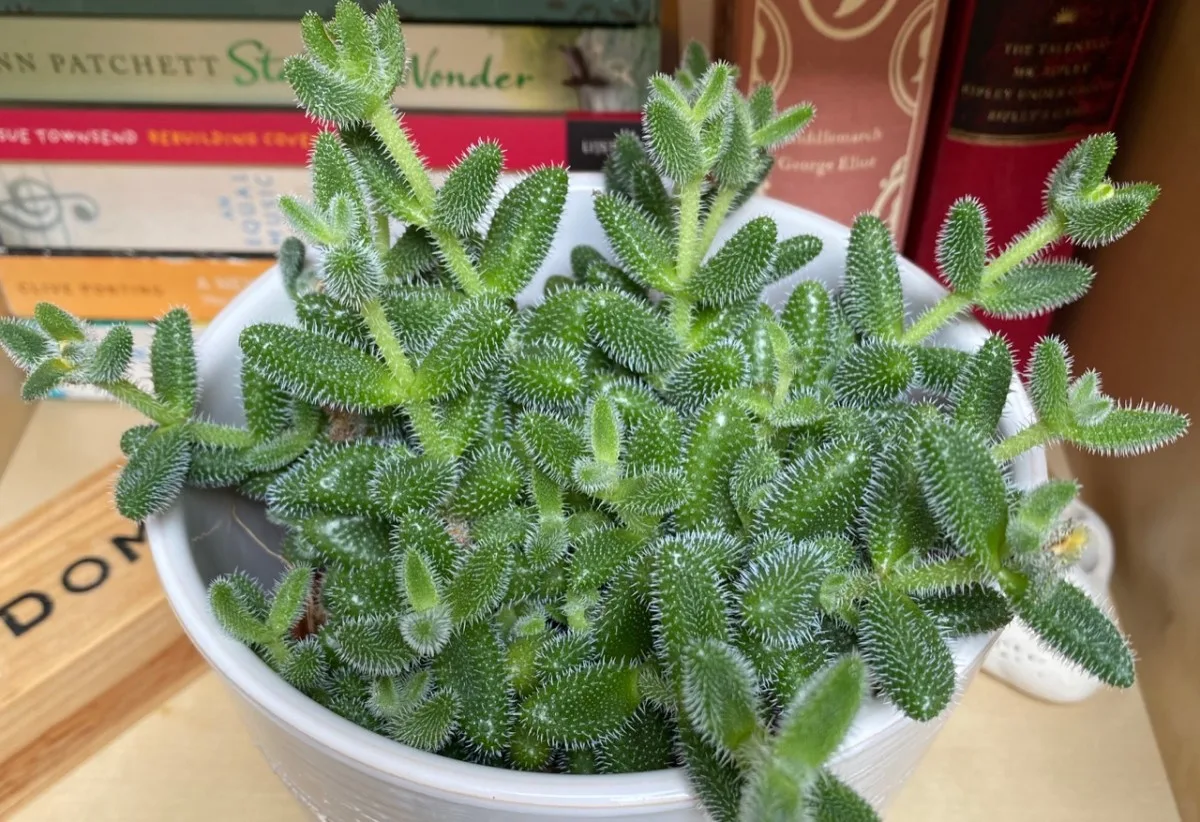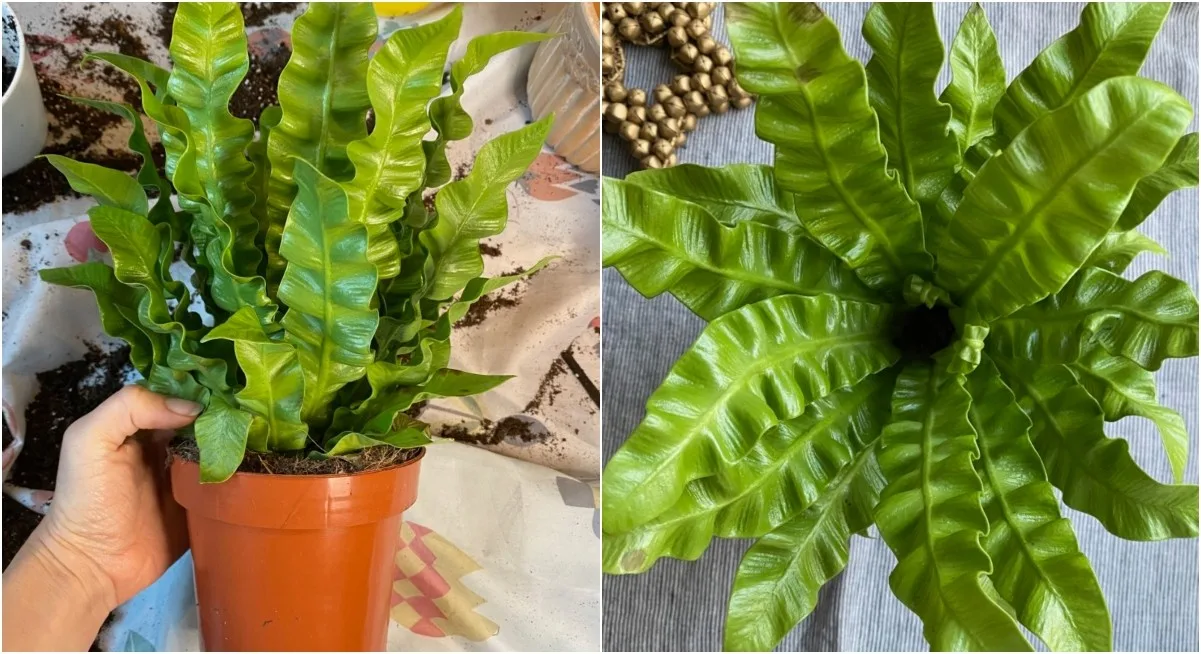
Ask any self-respecting houseplant aficionado if they have a kill list, and they’ll likely admit to having put a few leafy friends to rest. It happens; you learn; you move on. But what about a list of plants that are just constantly yo-yo-ing between thriving and imminent disaster?
For me, ferns tend to fall into this category.
I have a serious case of fern envy shamelessly directed at all those luscious plants overspilling their hanging baskets. My Boston ferns (Nephrolepis exaltata) are either in a state of robust health or teetering on the edge of respectability. (You know, just shedding all their garb all over on my bathroom floor.)
If you don’t believe me, here’s the sorry state of one of my Boston ferns.
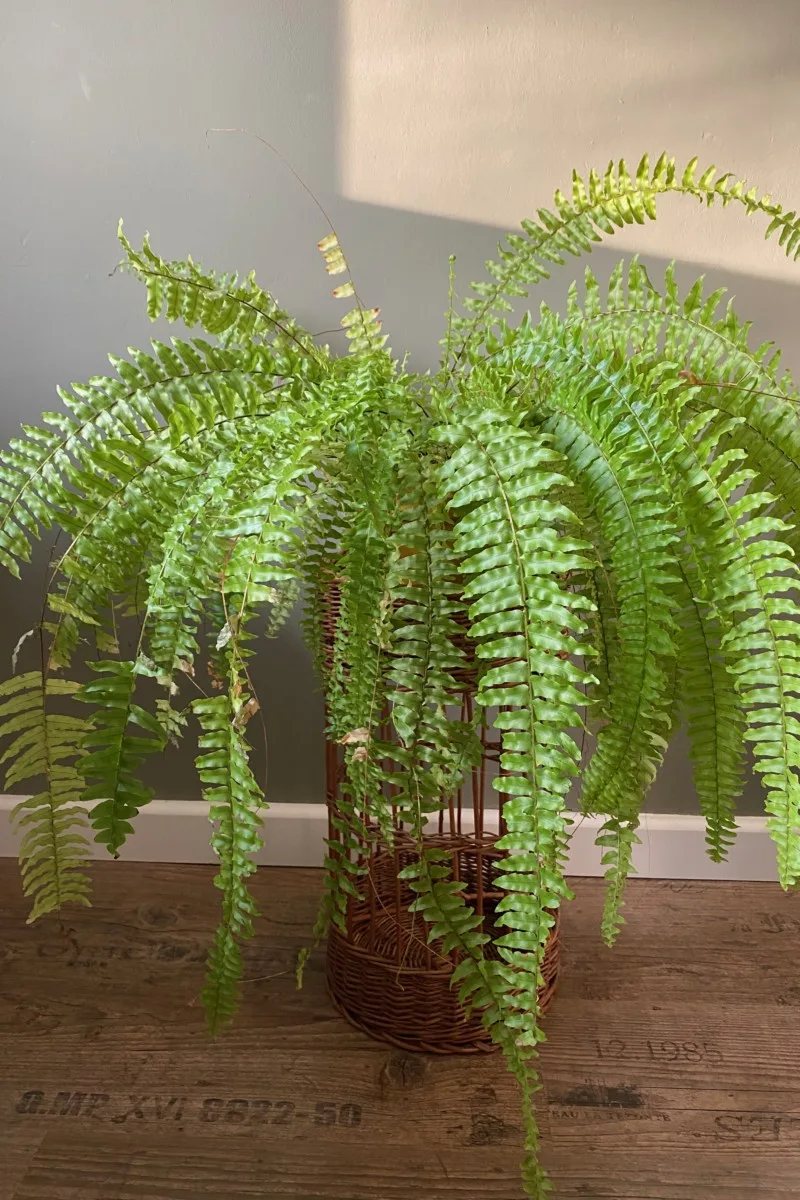
I love ferns, but I always thought they would never love me back.
This all changed when I brought home yet another type of fern, the Asplenium nidus ‘Crispy wave’. Finally, a fern that agreed to live with me without throwing temper tantrums.
If you’re also having trouble keeping more popular ferns alive, allow me to introduce you to this no-fuss queen.
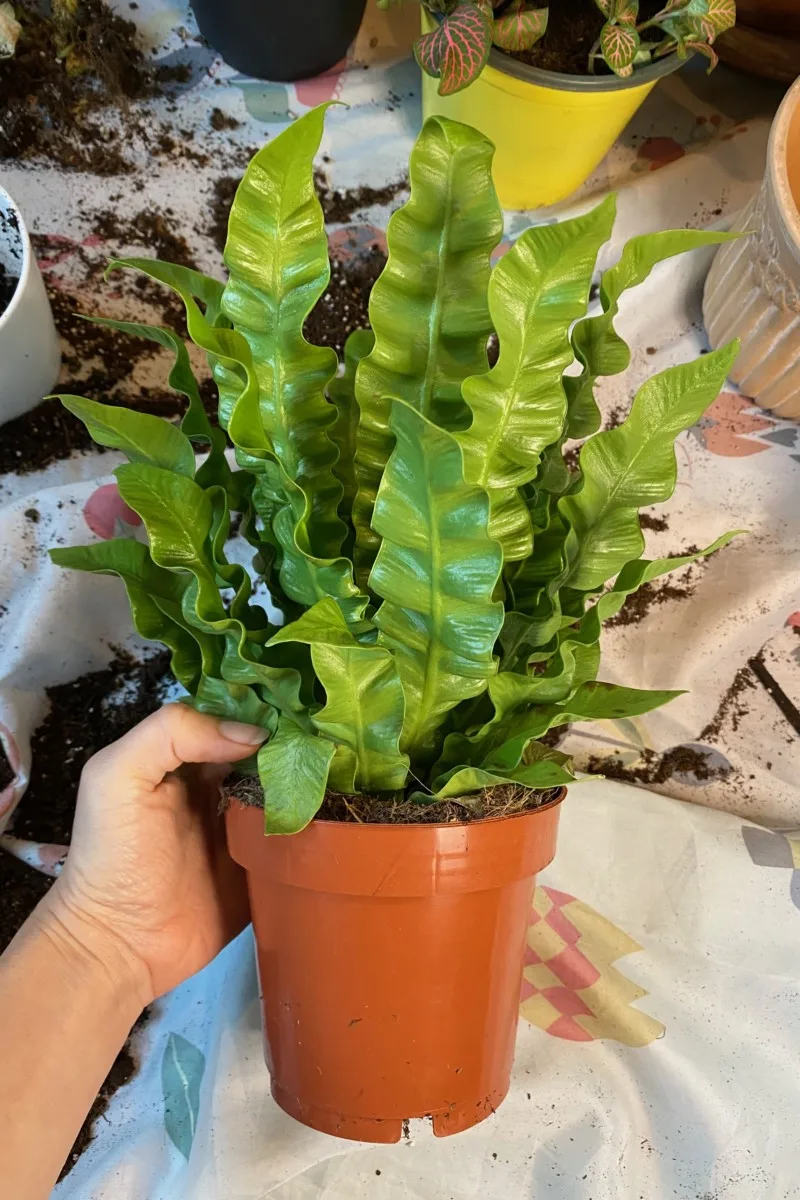
I wouldn’t normally suggest to buy houseplants on Amazon, but if you can’t find ‘Crispy wave’ in your local plant store, this listing offers an affordable plant and with surprisingly good reviews (for Amazon houseplants).
Let’s have a closer look at how to care for the ‘Crispy wave’ and keep it happy as an indoor houseplant.
But first, let’s clarify this one detail:
What’s the difference between the ‘Crispy wave’ and the bird’s-nest fern?
I bought my ‘Crispy wave’ on a whim after having spotted it tucked away in a corner of my local plant shop (a charming little place that gets quite a lot of business from me).
I asked the shop owner if the ‘Crispy wave’ fern was the same as the bird’s-nest fern. Although the owner was very nice and knowledgeable, she wasn’t sure what the difference was. So after a bit of back-and-forth, I decided to stop holding up the line and do my own research.
So I went digging for the answer about fifteen minutes after I brought my ‘Crispy wave’ fern home.
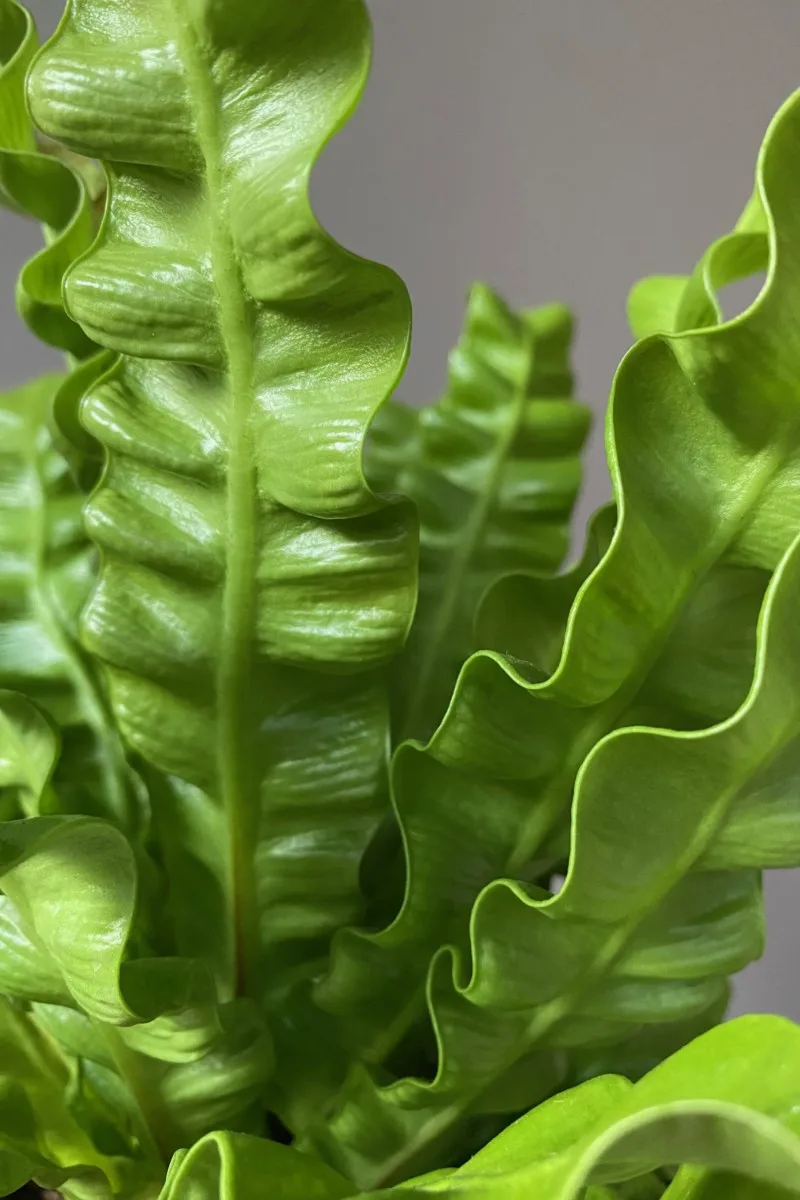
It turns out that ‘Crispy wave’ is a cultivar of bird’s-nest fern. The popular name “bird’s-nest fern” is used for all Asplenium nidus sold as houseplants. But Asplenium nidus has several popular cultivars, and ‘Crispy wave’ is only one of them.
And a fairly new one too!
It was first patented in 2000 by Yuki Sugimoto in Japan and the patent wasn’t granted in the United States until 2010. (Have a look at the patent application, if you, too, find this process fascinating.)
The reason I was adamant about finding out whether it was the same plant in the store was because I already had an Asplenium nidus ‘Osaka’ at home. I could tell there was a slight difference between the two, but I couldn’t quite put my finger on it until I put them side by side.
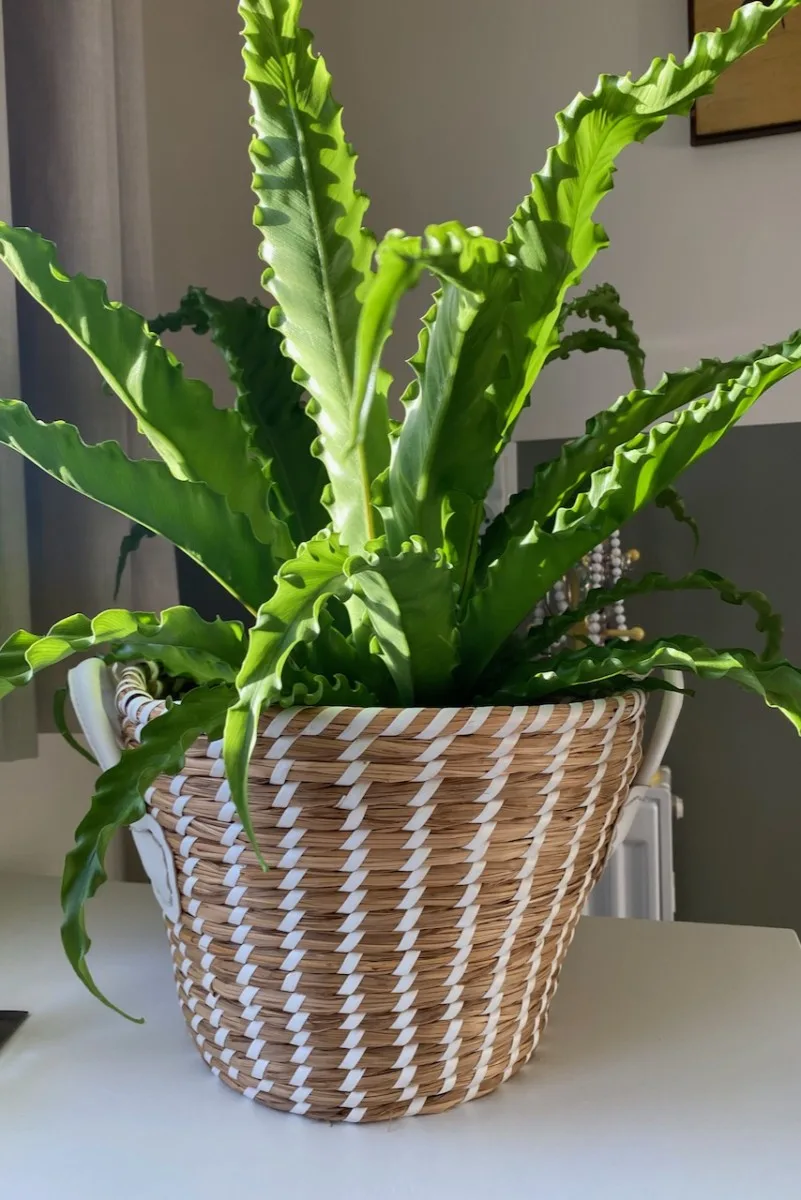
Can you tell the difference?
There are three main differences between the two types of bird’s nest ferns.
Going back to the patent application (linked above), I found out that, according to research conducted in Denmark over the course of two years, there are a few differences between the two cultivars.
Here are the three main differences between the more popular and older bird’s-nest cultivar ‘Osaka’ and the young ‘Crispy wave’.
‘Crispy wave’ has stiff and curvy fronds. The fronds of ‘Osaka’ are soft and overhanging.
‘Crispy wave’ has fewer fronds (35) than ‘Osaka’ (about 40 fronds). The ‘Crispy wave’ fronds are described as “yellow-green” while Osaka is “lighter yellow-green.”
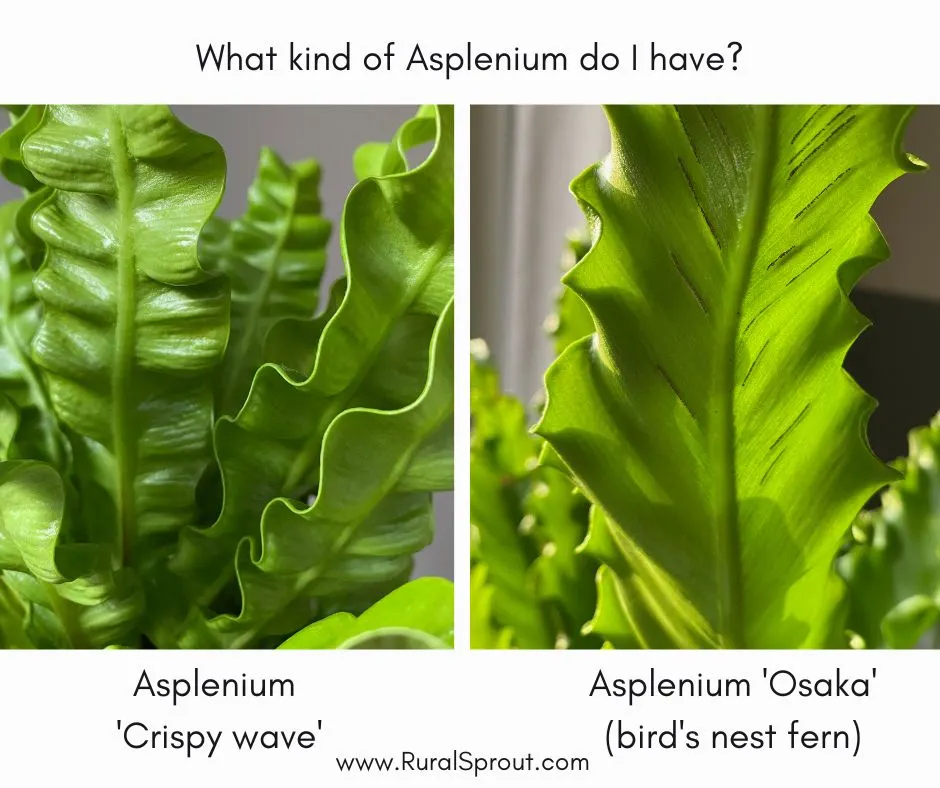
The fronds look similar from a distance, but upon closer inspection you can tell the differences.
And perhaps the most important difference for hobby plant-keepers, the ‘Crispy wave’ has a more compact growth, reaching around 8 inches in height (about 20 cm) and 20 inches in spread (roughly 26 cm). On the other hand, ‘Osaka’ grows more upright and reaches 12 inches (30 cm) in height with a spread ranging from 16 to 18 inches (41 to 45 cm).
So if you’re looking for a fern that stays small, ‘Crispy wave’ is the right choice for you. However, don’t pump your ‘Crispy wave’ full of fertilizer because you’re expecting it to grow as large as other bird’s-nest ferns.
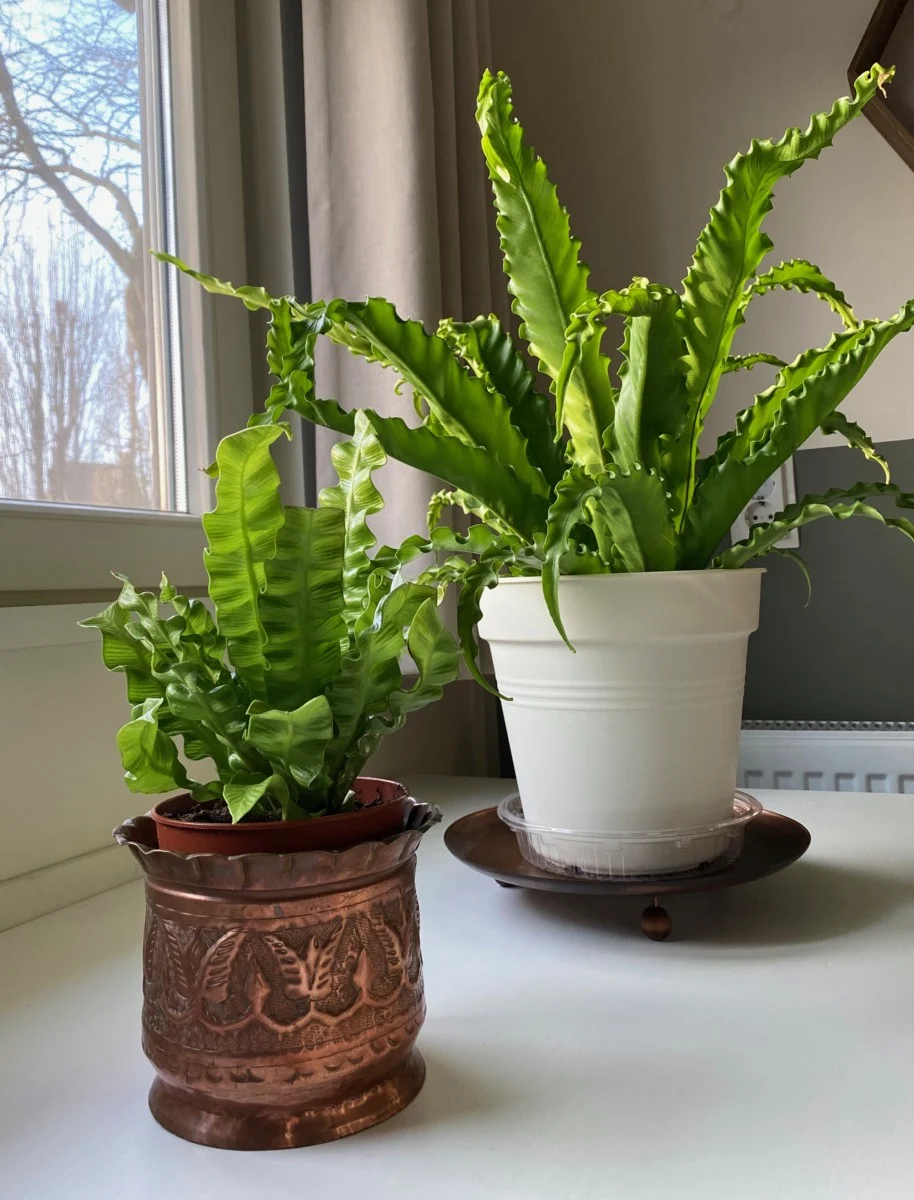
The good news is that if you already have a bird’s-nest fern, this care guide will apply to both. And if you’ve already successfully grown a bird’s-nest fern, then keeping a ‘Crispy wave’ alive and happy shouldn’t be an issue.
How often should I water my Asplenium ‘Crispy wave’?
Even though Asplenium nidus is a tropical species – native to Hawaii, south-east Asia, eastern Australia and eastern Africa – this doesn’t mean it needs a lot of water. In its natural habitat, Asplenium nidus is an epiphyte. This means that it doesn’t usually grow straight into rich soil, but on the surface of other plant structures. In the wild, you can find them growing on palm trees, rotten tree trunks and piles of organic matter.
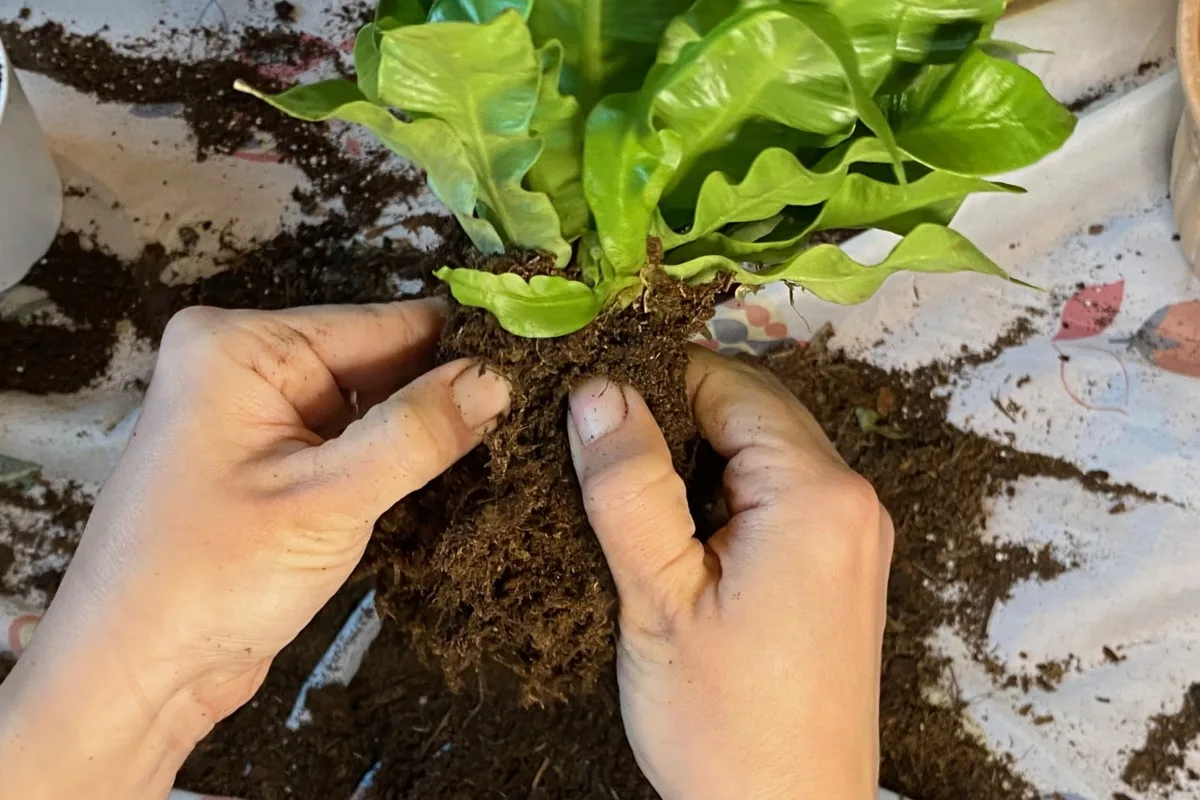
As an epiphyte, it has a small root structure relative to the size of the crown. So the ‘Crispy wave’ has to take its moisture not only via its shallow rhizomes, but also through its leaf surface.
If you want your Asplenium ‘Crispy wave’ to thrive in your home, moist soil combined with high humidity are two of the most important requirements.
I rarely recommend moist soil for houseplants, due to how easy it is to overwater and kill them this way. But a fern really needs constantly moist soil. My caveat is that you should make sure the soil is very free-draining. Emphasis on the very. If you can find fern potting mix (some manufacturers also call it “tropical mix”), high in coco coir and finer bark, your Asplenium will love it.
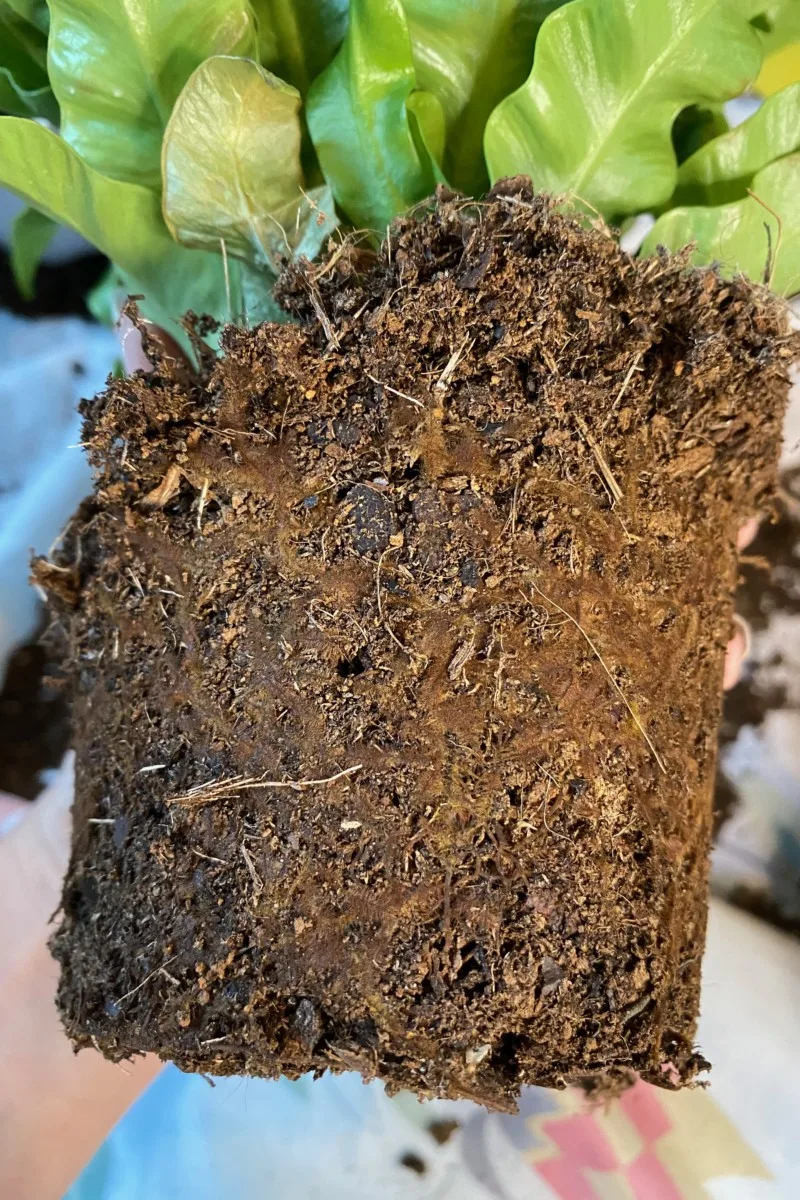
The keyword for the perfect soil for a fern is loose. Or at least loose enough to stay moist but not retain too much water. A handful of perlite or vermiculite (but no more than a fifth of the total) makes for a good homemade mix if you can’t get your hands on a special potting medium for ferns.
Tip: Water the ‘Crispy wave’ from below for better moisture distribution.
If you can’t find a fern potting medium, you can use the “watering from below” method. I keep my larger Asplenium pot in a wider bottom tray (a bit unsightly, but it does the job). I fill this tray with water about once a week in the summer (less often in the winter) and the plant takes what it needs. The rest of the water evaporates, adding to the humidity around the plant.
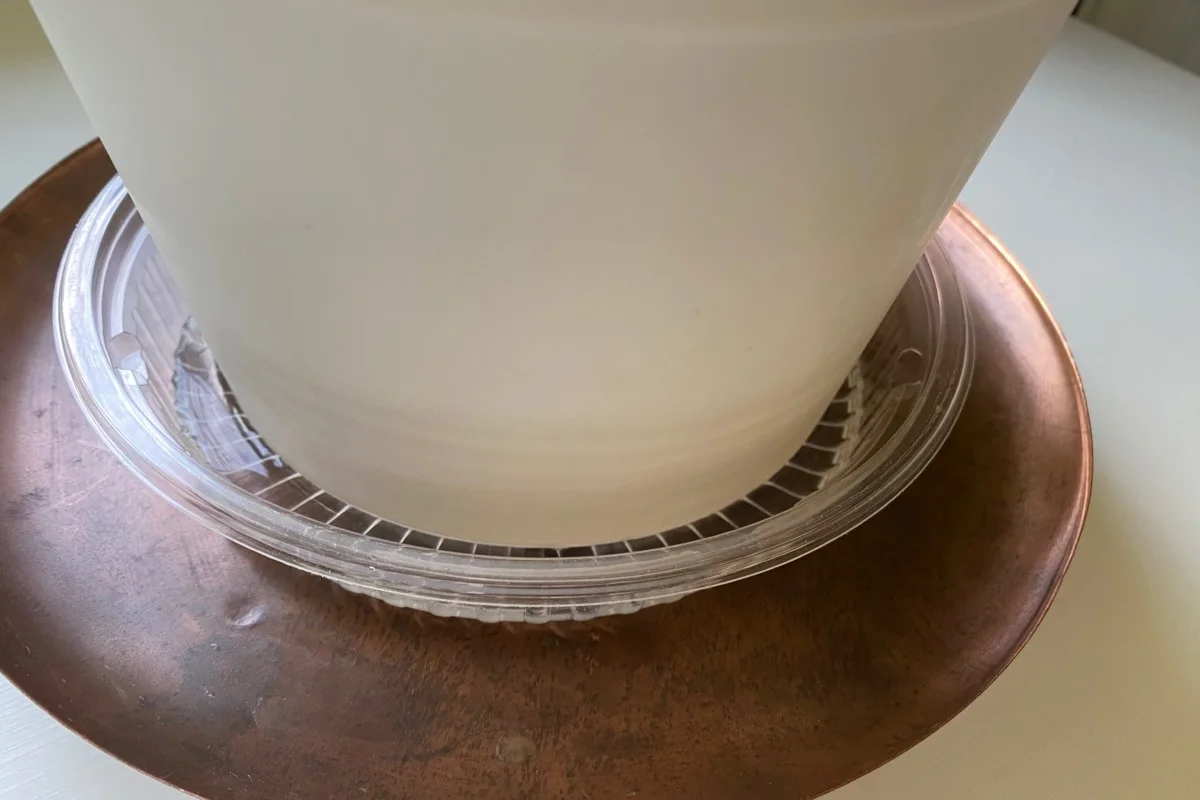
If you’re looking for a solution that looks a bit more elegant, you can plant your fern in a self-watering planter that comes with a built-in reservoir.
The same goes for the smaller Asplenium ‘Crispy wave’ which I keep in a smaller pot. The size of the bottom tray is proportional to the size of the pot.
One thing to keep in mind is to never water Asplenium right in the center. There should be no water collecting in the rosette when you’re done. We want the soil to be moist, but not soggy wet, so more like a sponge that you’ve just wrung out rather than a saturated sponge.
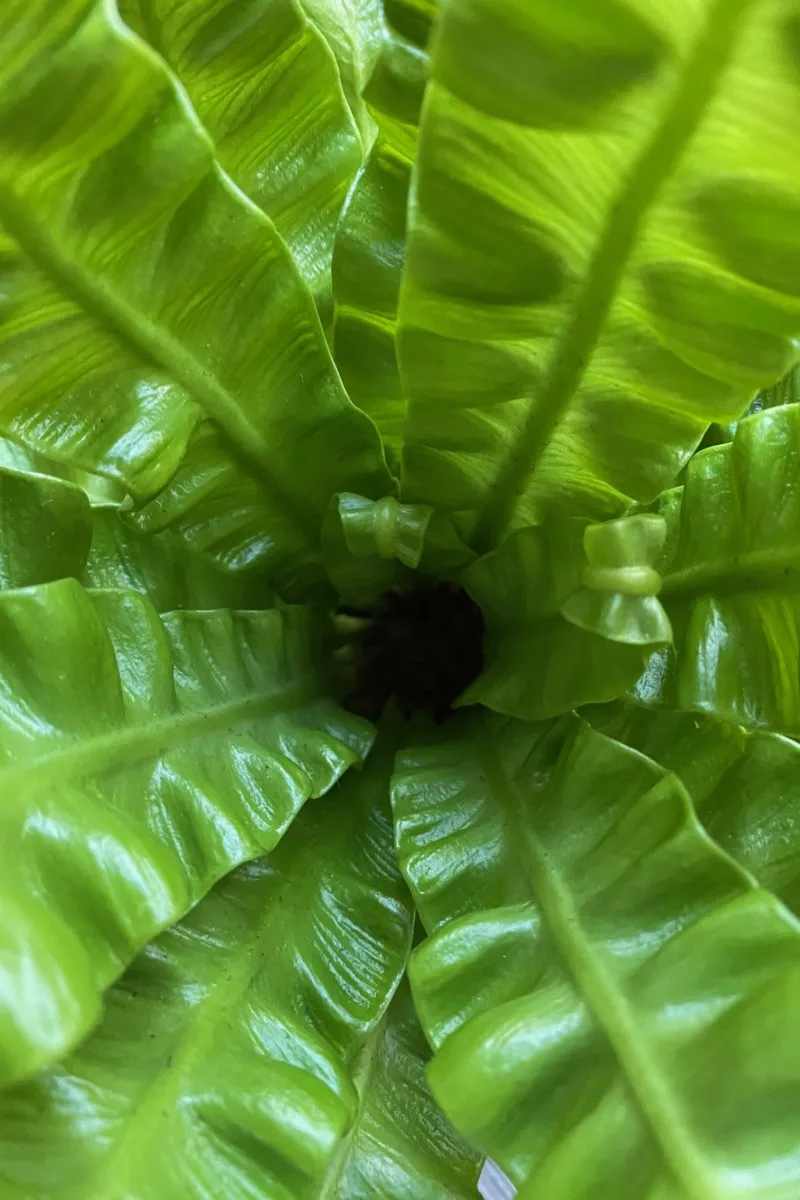
Tip: Water Asplenium in two stages.
If you’ve never grown ferns indoors before, I think it’s helpful to do the watering in phases until you get the hang of it. So use less water every time, but water it more often. Then come back a few hours later and check whether the water has been absorbed and the soil is drying out. If so, water your fern again (using even less water this time).
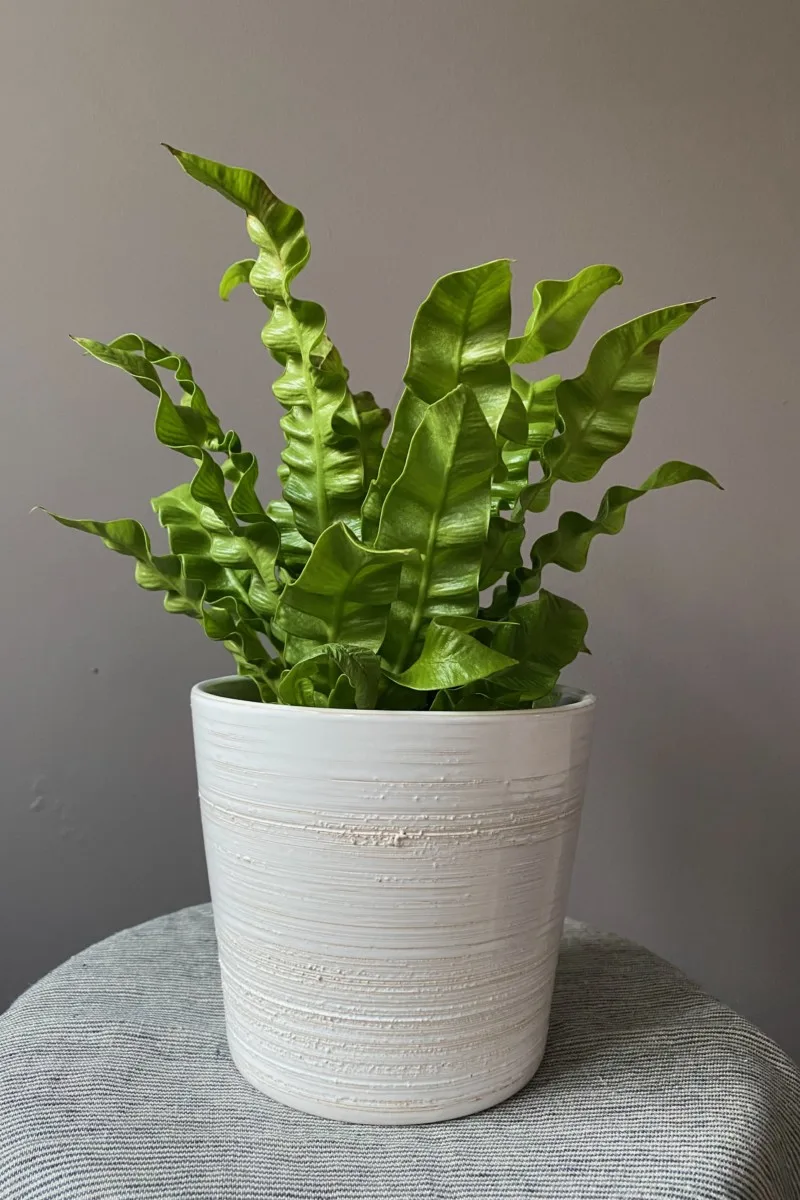
This is the opposite piece of advice to what I recommend for most other houseplants – water in one go. But it works for ferns because of their need for constant moisture.
Keep in mind that ferns grow faster in the summer and slow down in winter, so you’ll need to adjust your watering schedule accordingly.
Does Asplenium ‘Crispy wave’ need humidity?
Yes, yes and yes! Asplenium loves a high humidity environment where the temperature doesn’t go below 50F (around 10C).
I keep the ‘Crispy wave’ on a higher shelf in my kitchen, where steam from cooking and humidity from washing up help keep the surrounding air moist enough. The larger Asplenium lives in the bathroom, where the humidity gets even higher.
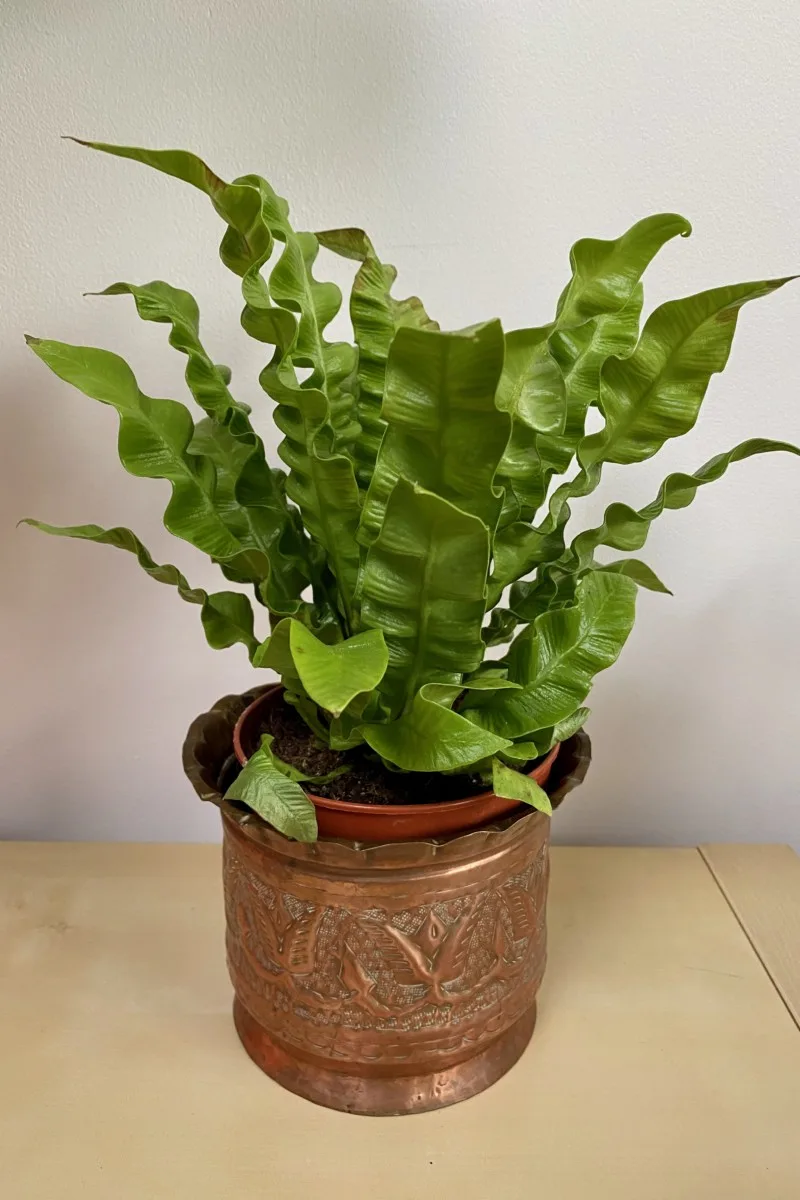
If the air is too dry, you might notice the tips of the ‘Crispy wave’ turn brown. It doesn’t look very pretty, so you can snip off the affected leaves to tidy it up. But do increase the humidity around the plant, if possible.
I never mist my houseplants, so I wouldn’t recommend that as a way to jack up the humidity. Instead, you can place a wet towel on a radiator or in front of a heat vent, or place the plant on a wet pebble tray. (I explained how I make my pebble tray in this post.)
How much light does an Asplenium ‘Crispy wave’ need?
The answer comes, once again, from the plant’s natural habitat. Asplenium grows on tree trunks under thick tree canopies or as undergrowth around tall trees. So it doesn’t need (and can’t handle) too much direct sunlight.
That’s good news if you live in an apartment that doesn’t get too much light. That’s why you’ll see bird’s-nest ferns pop up on a lot of ‘plants tolerant of low light’ lists.
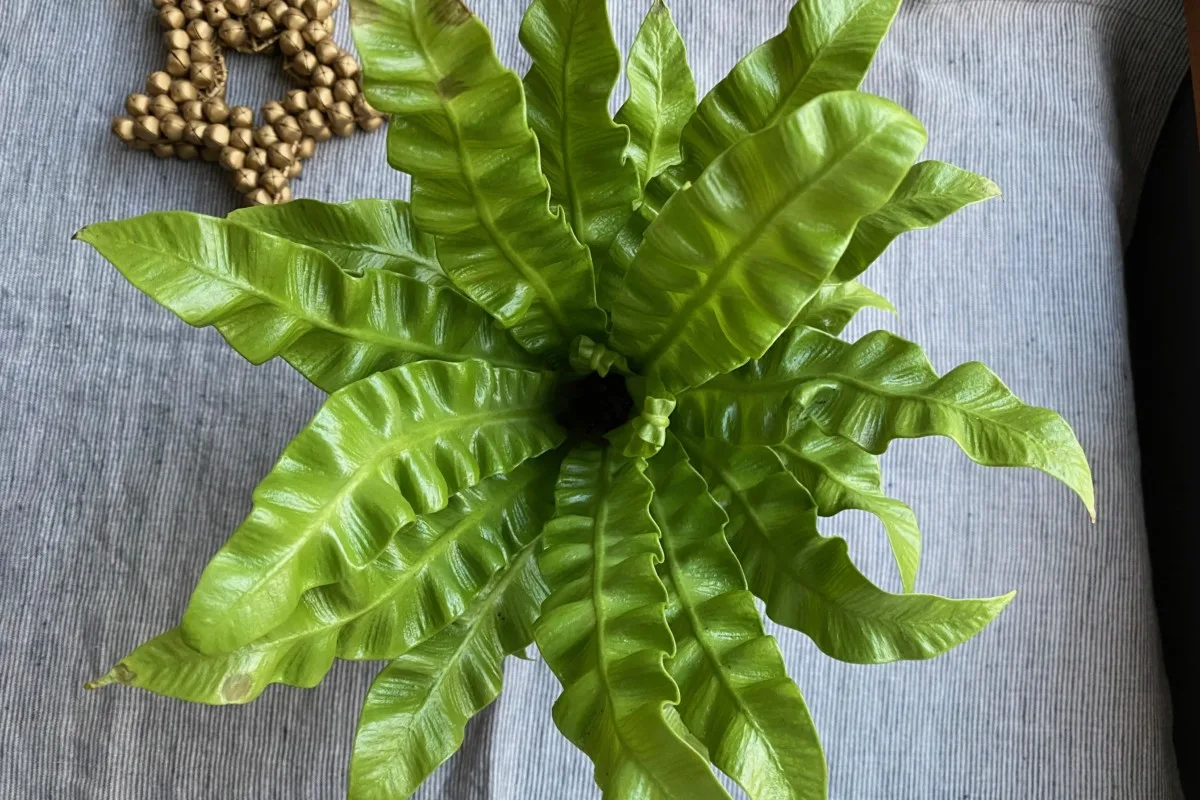
If your home is usually basked in sunshine, keep Asplenium ‘Crispy wave’ away from direct sunlight by moving it a few feet away from your east- or south-facing window. If that’s not possible, put it behind a sheer curtain that still allows some light to pass through, but will protect the plant from the scorching sun, especially in the summer.
Does the ‘Crispy wave’ flower?
No, it doesn’t. Ferns don’t produce flowers, seeds or fruit. Instead, they propagate via the spores attached to the underside of the leaves. But most Asplenium ‘Crispy wave’ sold as houseplants will rarely develop a sturdy spore structure. This is excellent news if you’re allergic.
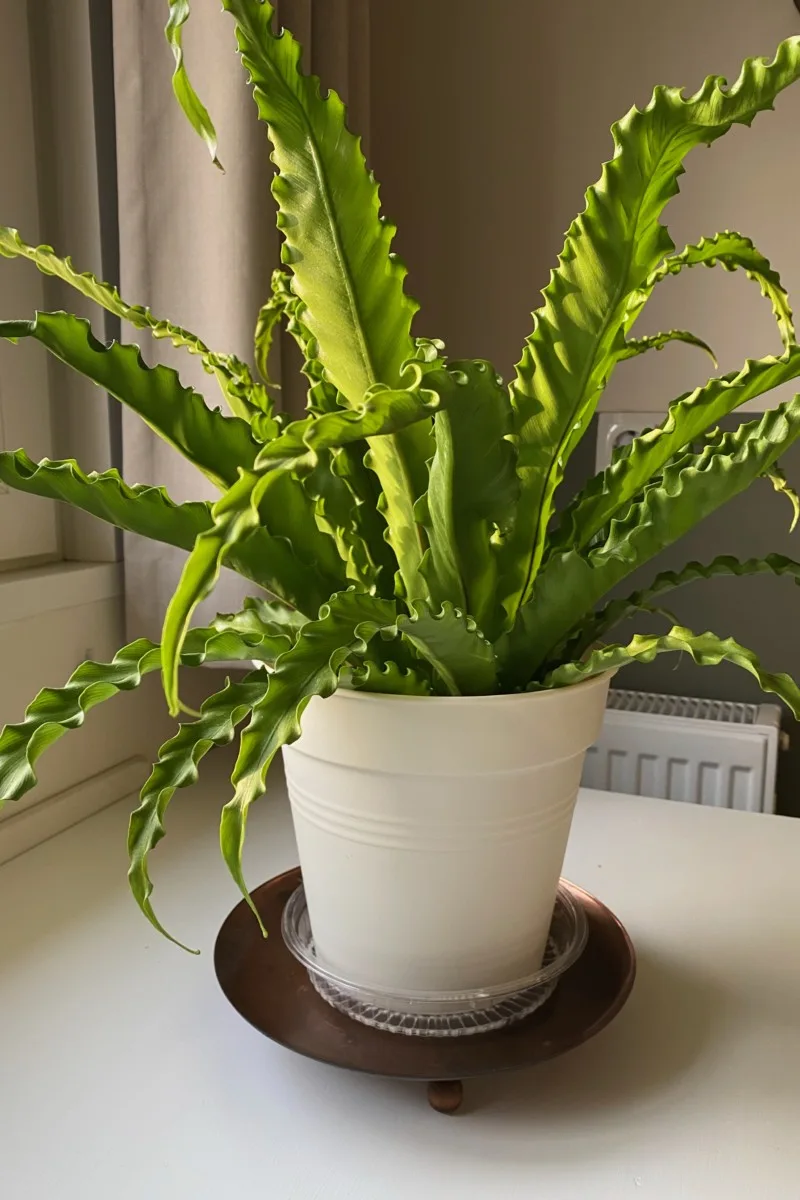
Likewise, propagating Asplenium via spores is a highly unsuccessful endeavor that you should leave to the professionals. It even took Yuki Sugimoto years of trials before he perfected the ‘Crispy wave’; and that was in a very controlled setting. Propagating ferns from spores is not something you can easily replicate at home. (Not that you should try, as the plant is copyrighted for now.)
I’m curious about what your prediction is. Do you think that the ‘Crispy wave’ fern will become a popular houseplant? Or will it be just a niche collector’s item?
Read Next:

Get the famous Rural Sprout newsletter delivered to your inbox.
Including Sunday ramblings from our editor, Tracey, as well as “What’s Up Wednesday” our roundup of what’s in season and new article updates and alerts.



